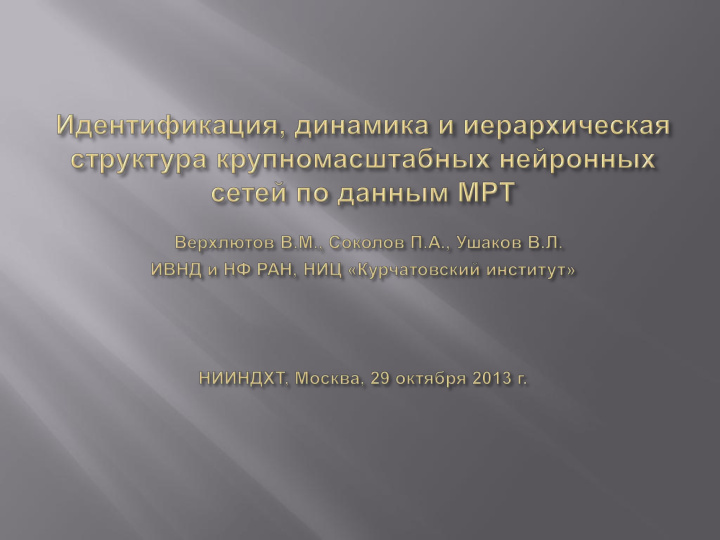



Extraction of a Whole Brain Structural Connectivity Network (1) High-resolution T1 weighted and diffusion spectrum MRI (DSI) is acquired. DSI is represented with a zoom on the axial slice of the reconstructed diffusion map, showing an orientation distribution function at each position represented by a deformed sphere whose radius codes for diffusion intensity. Blue codes for the head-feet, red for left-right, and green for anterior-posterior orientations. (2)White and gray matter segmentation is performed from the T1-weighted image. (3a.) 66 cortical regions with clear anatomical landmarks are created and then (3b) individually subdivided into small regions of interest (ROIs) resulting in 998 ROIs. (4) Whole brain tractography is performed providing an estimate of axonal trajectories across the entire white matter. (5) ROIs identified in step (3b) are combined with result of step (4) in order to compute the connection weight between each pair of ROIs. The result is a weighted network of structural connectivity across the entire brain. In the paper, the 66 cortical regions are labeled as follows: each label consists of two parts, a prefix for the cortical hemisphere (r=right hemisphere, l=left hemisphere) and one of 33 designators: BSTS=bank of the superior temporal sulcus, CAC=caudal anterior cingulate cortex, CMF=caudal middle frontal cortex, CUN=cuneus, ENT = entorhinal cortex, FP= frontal pole, FUS=fusiform gyrus, IP=inferior parietal cortex, IT=inferior temporal cortex, ISTC=isthmus of the cingulate cortex, LOCC=lateral occipital cortex, LOF=lateral orbitofrontal cortex, LING = lingual gyrus, MOF = medial orbitofrontal cortex, MT = middle temporal cortex, PARC = paracentral lobule, PARH=parahippocampal cortex, POPE=pars opercularis, PORB=pars orbitalis, PTRI = pars triangularis, PCAL = pericalcarine cortex, PSTS = postcentral gyrus, PC=posterior cingulate cortex, PREC=precentral gyrus, PCUN=precuneus, RAC=rostral anterior cingulate cortex, RMF = rostral middle frontal cortex, SF = superior frontal cortex, SP = superior parietal cortex, ST = superior temporal cortex, SMAR = supramarginal gyrus, TP = temporal pole, and TT = transverse temporal cortex. (Hagmann P. et al. ,2008)
Hagmann P. et al. , University of Lausanne, Lausanne, Switzerland,2008
Raichle M.E. et al.,Washington University School of Medicine,St Louis,USA,2001
Spatial maps of 22 resting-state networks (RNs) projected on the 3-dimensional surface of the Montreal Neurological Institute single-subject brain. Doucet G et al. J Neurophysiol 2011;105:2753-2763
Каузальная зависимость срабатывания крупномасштабных сетей ( LSN ) : 1) центральная зрительная сеть (CV), 2) периферическая зрительная сеть (PV), 3) центрально - височная сеть (CT), префронтальная сеть (PF), лобно - теменная сеть для левого полушария (FP_ L ), лобно - теменная сеть для правого полушария (FP_ R ), сеть по умолчанию ( DM ). Верхлютов В . М ., Ушаков В . Л ., Соколов П . А .,2013
Hierarchical clustering analysis of the temporal correlations of the 23 RNs. The dendrogram of the analysis (left) was partitioned into 2 global systems (S1 and S2) and 5 modules, 3 for S1 (M1a, M1b, M1c) and 2 for S2 (M2a, M2b). Doucet G et al. J Neurophysiol 2011;105:2753-2763
Крупномасштабные сети связанные с заданием идентифицировались не зависимо от парадигмы эксперимента (наблюдение и воображение / припоминание зрительных сцен) и являлись модификацией сетей состояния покоя ( RSN ) Верхлютов В.М., Соколов П.А., Ушаков В.Л., 2013 ( Данные получены в НИИНДХТ)
Выполнение задания вызывает ослабление связей внутри модуля и усиление межмодульных взаимодействий. Di X, Gohel S, Kim EH and Biswal BB (2013) Task vs. rest — different network configurations between the coactivation and the resting-state brain networks. Front. Hum. Neurosci . 7 :493. doi: 10.3389/fnhum.2013.00493
А Б В Г Корреляция и антикорреляция (p<0.001, T=3, N=21) центральной зрительной сети при просмотре (А,В) и воображении / припоминании (В,Г). Периферическая зрительная сеть - ментальное пространство для воображаемых зрительных сцен. Верхлютов В.М., Соколов П.А., Ушаков В.Л., 2013 ( Данные получены в НИИНДХТ)
Schlegel A, Kohler PJ, Fogelson SV, Alexander P, Konuthula D, Tse PU. Network structure and dynamics of the mental workspace. Proc Natl Acad Sci U S A. 2013 Oct 1;110(40):16277-82. doi: 10.1073/pnas.1311149110. Epub 2013 Sep 16.
Functional connections underlying interactions between the DMN and MNS . The DMN, a system for psychological self- relevant processing and mentalizing, and the MNS, a system for physical self-recognition and embodied simulation, may interact through densely connected “hubs” such as the AI and PCC/Prec. Green, DMN nodes; red, MNS nodes; blue, interaction nodes; MPFC, medial prefrontal cortex, pIPL, posterior inferior parietal lobule; PCC/Prec, posterior cingulate cortex/precuneus; IFG/PMC, inferior frontal gyrus/premotor cortex; aIPL, anterior inferior parietal lobule; STS, superior temporal sulcus; AI, anterior insula; Gray lines indicate possible functional connections based on (Iacoboni et al., 2001; Lou et al., 2004; Iacoboni and Dapretto, 2006; Sridharan et al., 2008; Schippers and Keysers, 2011). Figure was created using BrainNet Viewer . Molnar-Szakacs I and Uddin LQ (2013) Self-processing and the default mode network: interactions with the mirror neuron system. Front. Hum. Neurosci. 7:571. doi: 10.3389/fnhum.2013.00571
фМРТ, блоковая парадигма фМРТ, корреляционные методы Диффузионный тензорный анализ Теория графов МРТ - морфометрия МРТ+ЭЭГ МЭГ (магнитоэнцефалография) Электрическая и магнитная стимуляция головного мозга Генетический и анатомический анализ Области применения: оценка психофизиологического состояния мозга здорового человека, медицина, фармакология, биоинженерия, биоинформатика и т.д.
Recommend
More recommend